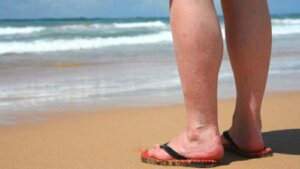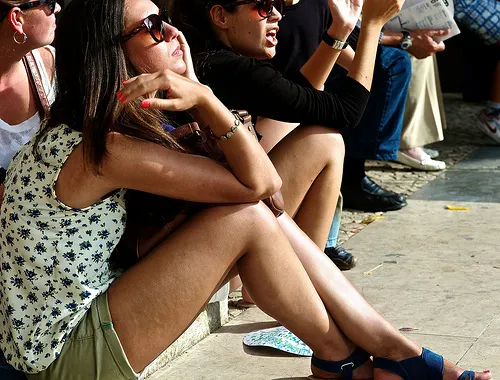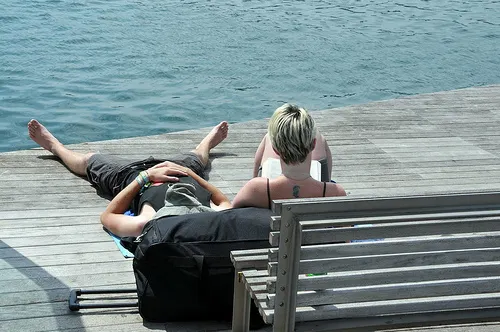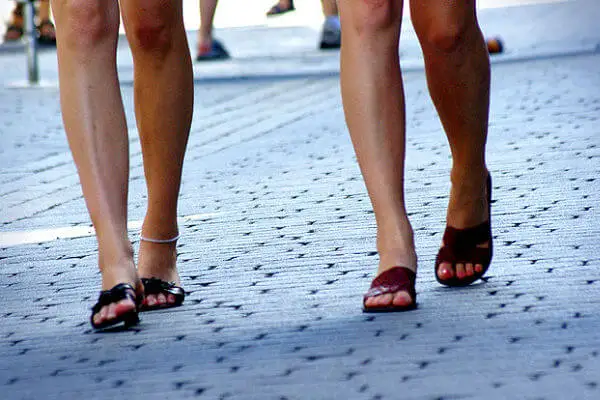Important! Guidelines to Reduce the Discomfort of Varicose Veins in the Summer


Written and verified by psychologist Valeria Sabater
If you suffer from varicose veins or chronic venous insufficiency, you will undoubtedly know that with high temperatures comes greater discomfort. Pressure, pain, and tiredness increase in varicose veins in the summer.
Fortunatley, the Spanish Society of Angiology and Vascular Surgery (SEACV) offers some simple and important guidelines that can help us improve our quality of life and enjoy a more relaxed summer if we suffer from varicose veins.
We’re sure that this information will be useful to you.
Varicose veins in summer: Daily condemnation for your legs
The Ramón y Cajal Hospital in Madrid (Spain) tells us that, although the origin of varicose veins has a very clear genetic component, sometimes factors such as obesity or a sedentary lifestyle can also favor their appearance.
However, with the arrival of summer and the rise in temperatures, anyone suffering from venous insufficiency may experience a series of changes that are worth taking into account to take precautions:
- The veins dilate.
- There’s an increase in fluid retention.
- There’s increased pressure and pain.
- The legs have an increased risk of thrombus development.
- There’s increased pain in the feet and swelling of the ankles.
Like this article? We think you may also find this interesting: 12 Fabulous Tricks to Keep Your Shoes from Hurting
Howeverf, we must be very clear that when it comes to the issue of varicose veins, there are no miracles. We can improve our well-being through exercises and specific guidelines, but the problem is not usually solved easily unless we undergo surgery.
Also, remember that varicose veins aren’t just an aesthetic problem: this condition is the result of a malfunction of the valves of the veins in the legs. They dilate, lengthen, and the blood flow becomes slower.
So, always check the condition of your varicose veins with your doctor, take the medication prescribed, and, come summer, put these simple guidelines that are sure to be very useful into practice.
How to take care of your varicose veins in the summer
The medical journal “Doctors and patients” offers some interesting strategies written through the Spanish Chapter of Phlebology (CEF) and the Spanish Society of Angiology and Vascular Surgery, mentioned above.
So, take good note of these simple tips:
1. Avoid direct heat
We know that when summer comes, you love to lie on the beach or in the pool and let the sun tan your legs a little.
However, we must be very careful with this, since high temperatures favor the dilation of varicose veins, and the problem worsens. Make sure to keep the following tips in mind:
- Sunbathe in the hours of less heat (before 10 a.m. and in the last hours of the day).
- If you expose yourself to the sun in the central hours (which would not be advisable in these cases), apply sunscreen on your legs and bathe with cool water every 15 to 20 minutes.
- Doctors warn that it’s best to avoid all sources of heat if we have varicose veins, so keep in mind that waxing isn’t a very good idea, for example.
We think you may also find this article interesting: Seven Tips to Prevent Your Shoes from Giving You Blisters
2. Move your legs for varicose veins in the summer
- Walk on the sand during the hours of less sun. Sand helps to reactivate our circulation and is very healthy.
- If you’re going on a long trip by car, train, or plane, you should know that these situations of immobility aggravate venous insufficiency. A piece of advice? Move whenever possible, wear compression stockings, massage upwards from the calf to the knee, and move your ankles in circles.
- Walk barefoot along the seashore: the water exerts a very appropriate venous contraction.
- Go swimming: you will find great relief whenever you do any exercise in the water, and it also promotes venous return.
3. Wear comfortable shoes and clothes
- No tight-fitting pants. The best options are sarongs and long cotton dresses that are cool and can also protect you from the sun.
- Also, take care of the shoes you wear: if they have a heel higher than 4 centimeters, the support surface of the foot is reduced and, therefore, prevents adequate venous return.
- Avoid tight ankle or calf socks and, if you need to, wear therapeutic compression stockings: they can offer a lot of relief at any given moment.
4. Prevent constipation
- In the summer, it’s very common to suffer from constipation. Due to trips, outings, excursions, and, in general, a change of habits, our body stops “being regular,” and we often have some problems going to the bathroom.
- According to doctors, all this causes us to accumulate fluids and toxins and in turn, affects our varicose veins.
- Remember to drink plenty of water and juices and consume enough fiber and fresh fruit. Summer is often a “dangerous” season in which we end up gaining some extra weight. Try to avoid this as much as possible.
- Follow a balanced diet and do not overeat. Your general health will thank you.
In conclusion, in order to get some relief when it comes to varicose veins in summer, it’s essential to avoid heat sources and take advantage of as many chances as possible to cool off our legs, especially in sea water or a pool. This will bring a tremendous amount of relief!
All cited sources were thoroughly reviewed by our team to ensure their quality, reliability, currency, and validity. The bibliography of this article was considered reliable and of academic or scientific accuracy.
- Gloviczki, P., Comerota, A. J., Dalsing, M. C., Eklof, B. G., Gillespie, D. L., Gloviczki, M. L., … Wakefield, T. W. (2011). The care of patients with varicose veins and associated chronic venous diseases: Clinical practice guidelines of the Society for Vascular Surgery and the American Venous Forum. Journal of Vascular Surgery. https://doi.org/10.1016/j.jvs.2011.01.079
- del Rio Solá, L., Aceves, M., Dueñas, A. I., González-Fajardo, J. A., Vaquero, C., Sanchez Crespo, M., & García-Rodríguez, C. (2009). Varicose Veins Show Enhanced Chemokine Expression. European Journal of Vascular and Endovascular Surgery. https://doi.org/10.1016/j.ejvs.2009.07.021
- Sprague, A. H., & Khalil, R. A. (2009). Inflammatory cytokines in vascular dysfunction and vascular disease. Biochemical Pharmacology. https://doi.org/10.1016/j.bcp.2009.04.029
This text is provided for informational purposes only and does not replace consultation with a professional. If in doubt, consult your specialist.











